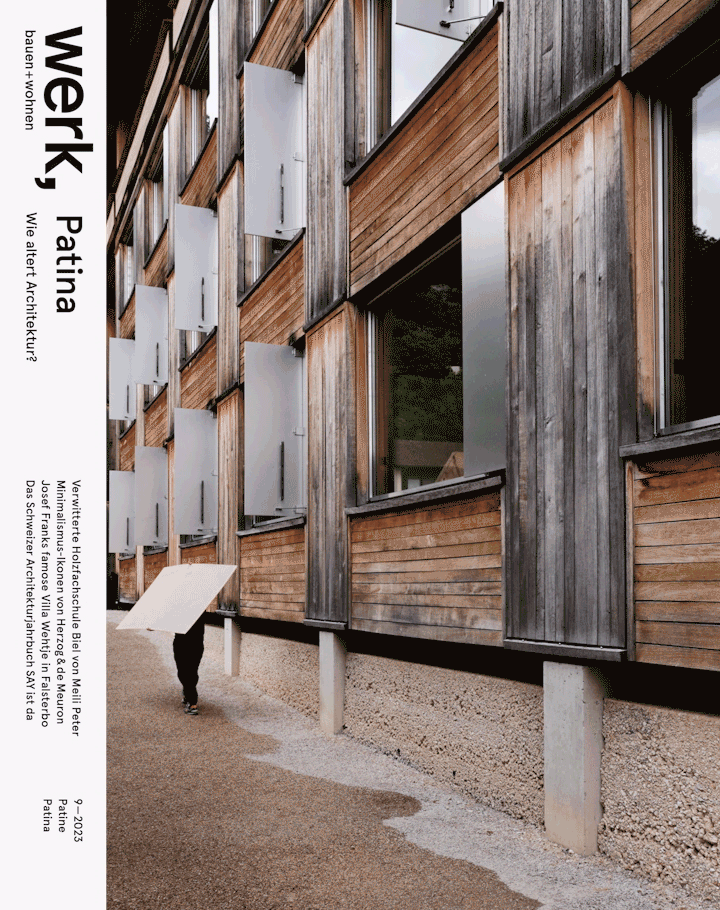werk, bauen + wohnen 9–2023

The Current of Time
It sweeps everything with it, making no exception for people or things. We are all subject to the passage of time and therefore also to the process of aging. In reference to people transience means death. Noone can escape this insolence of life. When an object changes it teaches us the capitalist logic of growth, we discard it or replace it with something new. Unless, that is, age makes something desirable, because there are only few of its kind (the law of supply and demand), in this case the traces of time even become valuable, we are confronted with patina.
In buildings patina is a double-edged sword and can be understood positively or negatively: benevolently as the visibly good course taken by things or, alternatively, as the ravages of time. Alongside time as a designer an entire series of other factors exerts an influence on the surfaces of buildings: the way they are used by people and, equally, the weather and man-made environmental influences such as air pollution. We live in a time in which somewhat more dusty grey is added in advance to the paint for the facade to anticipate the aging process: an architect friend once called it “aesthetic stability”. Here we remain silent about verdigris that comes out of a spray-gun or pre-weathered wood — the mania for controlling time seems to us all too human.
If architecture is to be permanent and therefore sustainable it must be able to age well, and possibly even become more beautiful with age. But how do industrial materials like plastic and glass age? How do the buildings of minimalism and those of the timber boom of the 1990s age? Pictures say more than words and, on this account, exclusively for this issue, we sent Philip Heckhausen and Roland Bernath o# on a trip to the icons of the 1990s.
Generally, we report about architecture that is still completely new and the images are subject to the very stringent control of the authors. How does architecture confront reality when the champagne glasses have been put back in the cabinet and the memories of planning and construction have faded? — Lucia Gratz, Jenny Keller, Roland Züger